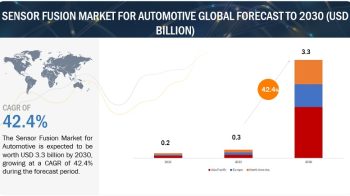
The global shape memory alloys market size is estimated to be USD 11.0 billion in 2021 and is projected to reach USD 18.8 billion by 2026, at a CAGR of 11.2% between 2021 and 2026. The growth in the market is highly attributed to the increasing demand for SMAs in the manufacturing of biomedical devices & surgical instruments, aircraft components and automotive actuators, and consumer electronics. North America is the largest market for SMAs, owing to huge demand from biomedical device manufacturing. The growth in the market is also attributed to the increasing demand for high-quality life-saving medical devices and better automotive & aircraft components. The physical properties of SMAs are encouraging their use in various end-use industries.
To know about the assumptions considered for the study – Download the PDF Brochure
Shape Memory Alloys are metal alloys that can remember their former shape and have the ability to return to the preformed shape when subjected to heat. Two major characteristics of these alloys are pseudoelasticity and shape memory effect (SME). Several metal alloys show SME, but only a few of them have the ability to recover from the large strain. The major types of Shape Memory Alloys are nitinol, copper-based alloys, iron-manganese-silicon alloys (Fe-Mn-Si), and others. Shape Memory Alloys find applications in various end-use industries such as biomedical, aerospace & defense, automotive, and consumer electronics & home appliances. Shape Memory Alloys have gained importance in major end-use industries, such as biomedical and aerospace & defense, owing to their unique properties such as pseudoelasticity, kink resistance, biocompatibility, and high damping capability.
The Shape Memory Alloys market is segmented on the basis of type as nickel-titanium (nitinol), copper-based alloys, and iron-manganese-silicon (Fe-Mn-Si). The property of nitinol includes shape memory effect and pseudoelasticity. The characteristic of nitinol is attributed to the presence of an equal atomic percentage of the intermetallic compound, which improves the mechanical and shape memory properties. Nitinol SMAs are widely used for medical implants owing to their characteristics such as kink resistance, constancy of stress, high elasticity, and corrosion resistance. Copper-based and iron-manganese-silicon are low cost shape memory alloys for various end-use industry.
To know about the assumptions considered for the study – Request for Free Sample Report
The Shape Memory Alloys market is segmented on the basis of end-use industry as Biomedical, Aerospace & Defense, Automotive, Consumer Electronics & Home Appliances, and Others. Biomedical is the largest end-use industry of shape memory alloys. Shape memory alloys are suitable for a wide variety of biomedical applications, such as cardiovascular stents, dentistry, bone repair, and surgical instruments, owing to their thermal and mechanical properties. In Aerospace & Defense shape memory alloys are widely used in the manufacturing of commercial and military aircraft components owing to their reliability and multifunctionality, such as excellent corrosion resistance, strength, toughness, metallurgical stability, and weldability. Shape memory alloys are largely used in automotive actuators owing to their high strength, high electrical resistance, large recovery strains, easy workability, and excellent corrosion resistance. For consumer electronics and home appliances shape memory alloys are used in Thermo valves and thermostatic actuators, fire protection devices, cellular phones, headphones, portable cellular telephone antennas, rice cookers, coffee makers, ACs, cameras, and minidisc recorders. The others segment includes construction, the industrial machinery and transport machinery. SMAs are preferably used in these applications owing to their pseudoelastic properties.
The major industry players have adopted joint venture, agreements, and acquisitions as growth strategies in the last four years. The leading players in the market are ATI Specialty Alloys & Components (US), SAES Getters S.P.A. (Italy), Johnson Matthey PLC (UK), Nippon Steel & Sumitomo Metal (Japan), Furukawa Electric Co., Ltd. (Japan), Fort Wayne Metals (US), Nippon Seisen Co. Ltd. (Japan), Xian Saite Metal Materials Development Company Limited (China), Seabird Metal Material Co., Ltd. (China), Dynalloy Inc. (US), Metalwerks PMD, Inc. (US), Ultimate Wireforms, Inc. (US), Daido Steel Co., Ltd (Japan), General Research Institute For Nonferrous Metals (GRINM) (China), EUROFLEX GmbH (Germany), Confluent Medical Technologies (US), Precision Castparts Corp. (US), Nanoshel LLC (US), Stanford Advanced Materials (US), Sunrise Titanium Technology (China), Boston Centerless (US), SMA Wires India (India), ALB Materials Inc.(US), M & T(Taiwan) Co., Ltd. (Taiwan), and Lumenous Peiertech (China).
ATI Specialty Alloys & Components is a manufacturer of specialty alloys and refractory metals for end-use industries such as aerospace & defense, oil & gas, automotive, electrical energy, and medical. The company operates through two major business segments, namely, High Performance Materials & Components (HPMC) and Advanced Alloys & Solutions (AA&S). It offers different SMAs such as nickel-based alloys, titanium-based alloys, zirconium-based alloys, and other specialty alloys. The company has its manufacturing facilities in the US, the UK, Poland, and China.
SAES and its subsidiaries engage in the production of components and systems for industrial and scientific applications. The company operates through five business segments, namely, metallurgy, vacuum technology, medical, specialty chemicals, and advanced packaging. It offers a wide range of nitinol alloys and shape memory actuator devices for medical and industrial applications under its metallurgy business segment. The company has several patents registered of worth USD 0.96 million (EUR .78 million). It has a presence across the globe and operates through its subsidiaries and has a strong distribution network of authorized distributors. It has 10 manufacturing facilities located in European countries and the US. The company also offers semi-finished shape memory alloy products such as tubes, wires & strips, and sheets, among others, through Memry, one of its subsidiary companies. The company has over 300 registered inventions (SAES case/Patent Families) in 70 years.
In 2012 SAES Getters joined forces with the German company, Alfmeier, to create the equal joint venture in Germany, Actuator Solutions GmbH, for producing components based on SMA technology. In 2014 the joint venture won the ‘German Innovation Award’ in the category of ‘medium-sized enterprises’.
The outbreak of the novel coronavirus or COVID-19 wreaked havoc on the global economy. The global economy entered recession due to the pandemic, with the lockdown of international borders and the shutdown of economic activities across countries to prevent the spread of COVID-19. The global commercial aviation industry observed decline in demand due to lockdown and travel restrictions. The manufacturing of new aircraft reduced due to the same. The spread of COVID-19 has greatly impacted medical devices, including dental care sectors, worldwide. All dental elective procedures were postponed which resulted in the reduction in the number of dental patients opting for dental treatments in hospitals and dental clinics. However, the market is expected to grow steadily during the forecast period, with business operations returning to normal.
The companies have initiated the following developments:
- In December 2019, Nippon Steel and ArcelorMittal acquired Essar Steel India, one of India’s four major steelmakers for USD 10 Million, and entered the Indian market as an integrated steelmaker. Nippon Steel planned to engage in full range of activities, from raw materials procurement to upstream and downstream processes, under a new company name, AM/NS India.
- In September 2019, Furukawa Electric Co., Ltd. agreed to establish a joint venture, Essex Furukawa Magnet Wire LLC with its long-term partner Superior Essex Inc. and integrate its heavy magnet wire business and polyimide tub business with Superior Essex’s magnet wire business through a company split and investment in kind. Through this joint venture, Furukawa Electric will provide high value-added products and technological innovations required by customers globally.
- In January 2018, ATI announced a 50–50 joint venture with a subsidiary Tsingshan Group (US) to produce 60-inch wide stainless sheet products for sale in North America. This joint venture will increase ATI’s sustainability in the North American market.
- In July 2018, ATI acquired the assets of Addaero Manufacturing (headquartered in Connecticut, US) for USD 10.0 million. Addaero Manufacturing is a metal alloy-based additive manufacturer for the aerospace & defense industry. This business is reported as part of the HPMC segment from the date of the acquisition. The purchase price allocation included a USD 2.0 million technology intangible asset and goodwill of USD 6.0 million, which is deductible for tax purposes. The final allocation of the purchase price was completed in the third quarter of 2018.
- In January 2018, ATI has signed two long-term agreements with General Dynamics Land Systems Inc. (US) to be a leading supplier of titanium plate for use in next-generation military vehicles. This agreement is expected to help ATI expand its specialty materials and components business in the global defense industry.
- In June 2017, ATI signed a long-term purchase agreement with Pratt & Whitney (US), a United Technologies Corporation company. Through this agreement, ATI will supply isothermal forgings and nickel-based powder alloys to Pratt & Whitney for next-generation jet engines. This agreement is expected to make ATI a leading material provider in the aviation industry.


